One might think that a stock pot is just a large pot that’s used to boil everything from beans to bones. However, you’d be mistaken for thinking they are only that because this cookware comes in many sizes and designs.
So, how do you decide which size of stock pot is ideal? It depends on two things: what you want to cook and how many mouths you want to feed.
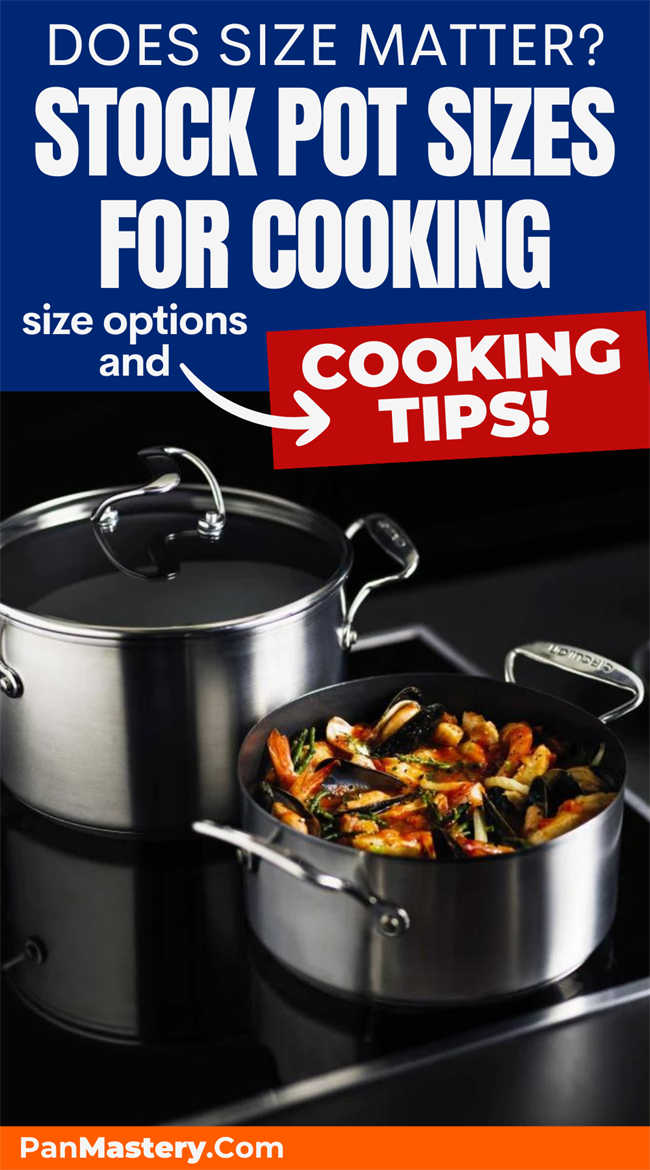
An 8-quart stock pot is essential in most households because it can usually whip up dishes for 2 to 4 people. A whole chicken can fit in such a size for the best soup you’ve ever tasted.
However, there are situations where an 8-quart won’t cut it. Maybe you’d like to make curries with a 6-quart stock pot, steam lobster pieces with a 12, or hold a party with a 20, making unforgettable delicacies.
Read this guide, and you’ll learn how to get the best sized stock pot for your needs. Grab onto your apron and spatula so we can cook.
Factors to Consider When Choosing the Stock Pot Size
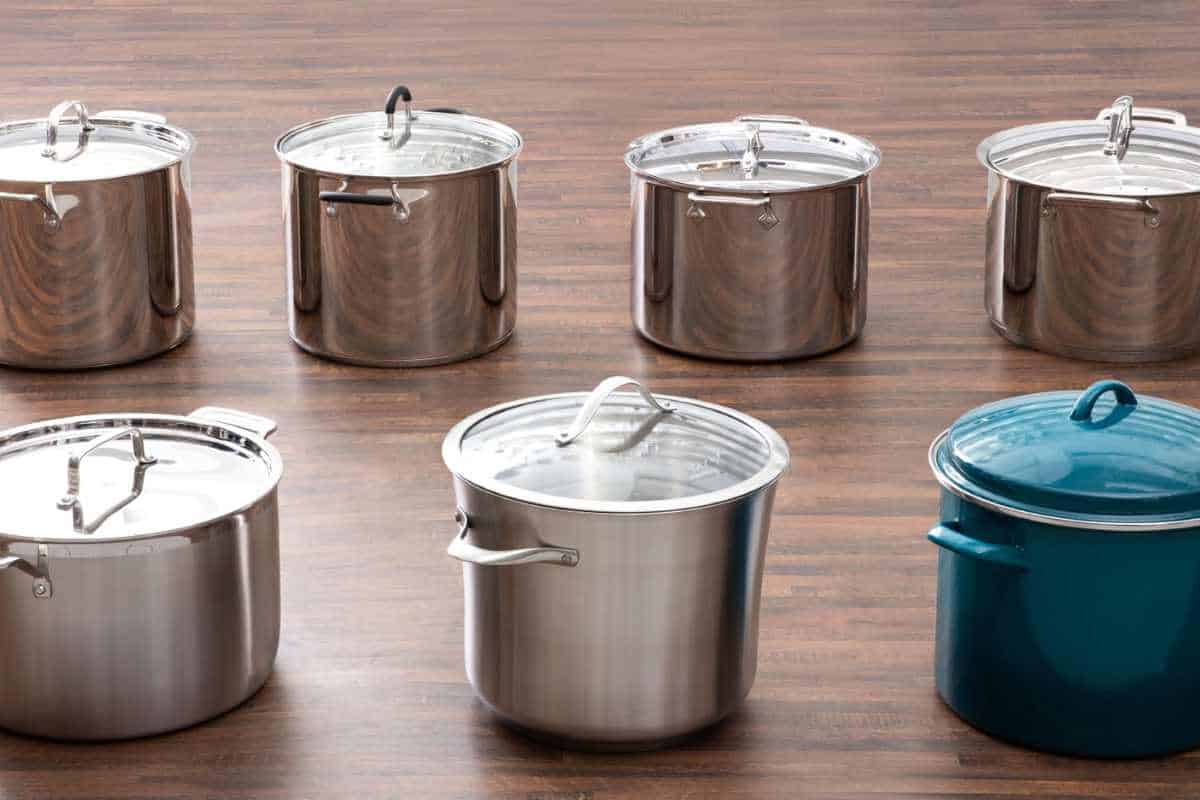
A stock pot that is too big leads to excessive evaporation, lost flavor, and a waste of heat energy in the steam.
On the other hand, a small stock pot means you won’t fit in all the ingredients adequately, let alone toss or stir them when you must.
Filling up the stock pot with too much water and little ingredients also leads to uneven cooking. Here’s what you need to consider to get a stockpot size that hits the sweet spot.
The Golden Formula
In general, fill a stock pot to the two-thirds mark with all your ingredients and liquid. The space left is enough to stir and toss. There won’t be excessive evaporation or liquid spilling out.
You’ll often serve 0.5 to 1 quart of stock per person. So, if serving two people, go for a stock pot around the 2-3 quart range or slightly larger to account for the volume of other ingredients.
Quantity of Food
How many people are you going to serve? Is it just you, a plus one, a family get-together, or a party? The answer to this question is critical to get the right-sized stock pot.
Next, ask, do you wish to make chicken soup or beef broth? Can the ingredients fit? Are they enough for your guests at a go, or will you have to rinse and repeat to get enough food?
You already have the golden formula:
- 0.5 to 1 quart per person.
- Fill the pot at around the two-thirds mark to allow for expansion and evaporation.
Types of Food
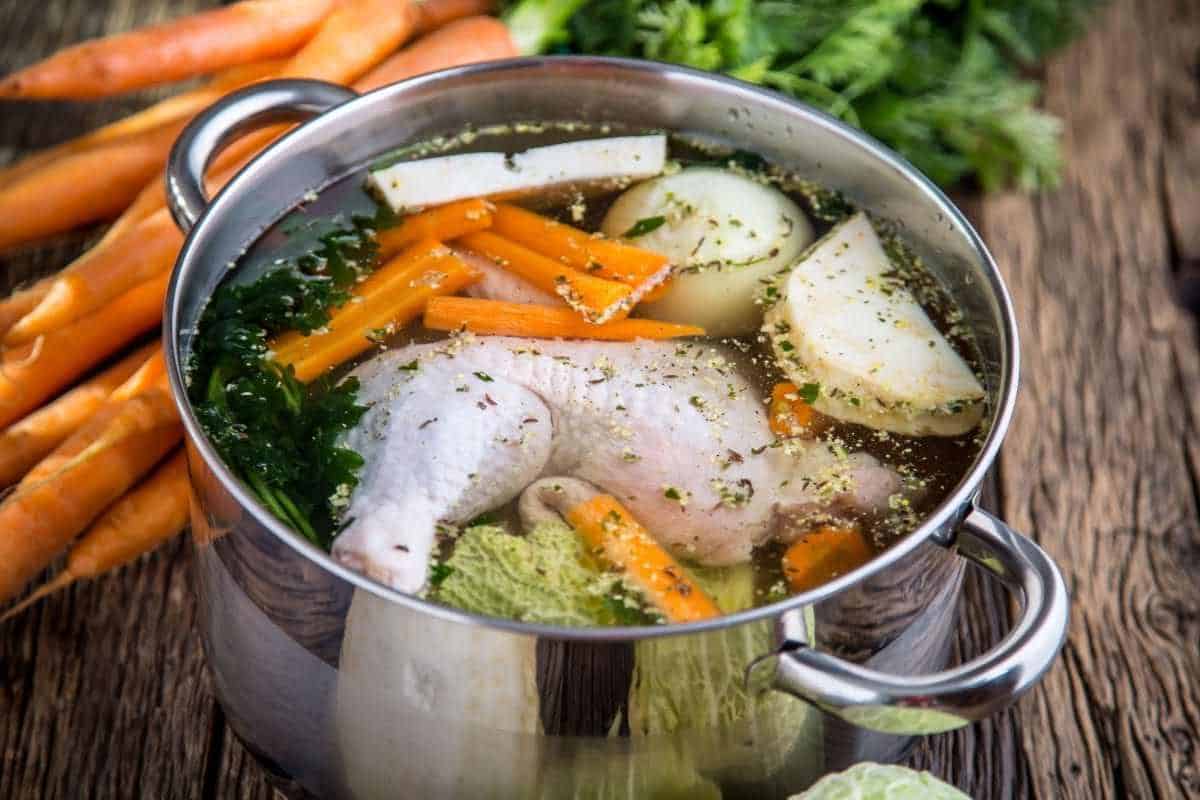
Ingredients are different, some requiring more water and space to cook properly. For example, pasta needs enough water and room to expand without sticking. Stews need adequate water to simmer and reduce—a narrow base and longer sides are ideal.
Whereas diced meat or beans can be tossed into any stock pot irrespective of horizontal or vertical dimensions, a whole chicken needs an 8-quart stock pot where it can fit.
Stove Size and Burner Compatibility
The stock pot you use should be compatible with your burner size requirements and compatibility of the cooker (gas, electric, induction, etc.).
If the stock pot is too big for your burner, it can cause a hot mess. You might encounter issues like:
- Trouble cooking evenly due to hot or cold spots.
- The risk of spillage or boilover on the stove creates a sticky and dangerous situation.
- Making it a hassle to set or get the pot on and off the stove.
If the stock pot is too small for the burner, you might face the following issues:
- Pot heating up too fast or too slow depending on the heat setting.
- Food burning on the bottom due to excessive heat or loss of moisture.
- An unstable, wobbly stove that is unsafe and annoyingly worrisome.
Standard Pot Sizes
Common stock pot sizes in the market range from 6, 8, 12, and 16 quarts. Made In is a popular brand that offers 6, 8, and 12-quart-sized pots at the time of writing.
In the table below, you can get a feel of different-sized stock pot uses before we get into the meat and potatoes of each range.
| Quarts | Suitable for | Food Type |
|---|---|---|
| 4 | 4-6 people | Cooking small amounts of food; boiling pasta, rice, or veggies. |
| 6 | 4-6 people | Small batches of soup, chili, stew, curry, or sauces. |
| 8 | 8-12 people | Making stews, sauces, soup, chili, or curries; boiling pasta, rice, or veggies; whole chicken. |
| 12 | 12-18 people | Preparing stocks, broths, soups, chili, stews, curries, or sauces; boiling pasta, rice, or veggies; large bones, meat cuts; steaming lobster. |
| 16–20 | 16-32 people | Handling large batches of stock; boiling pasta for a group; canning; brewing beer. |
Small Stock Pots (1–4 Quarts)
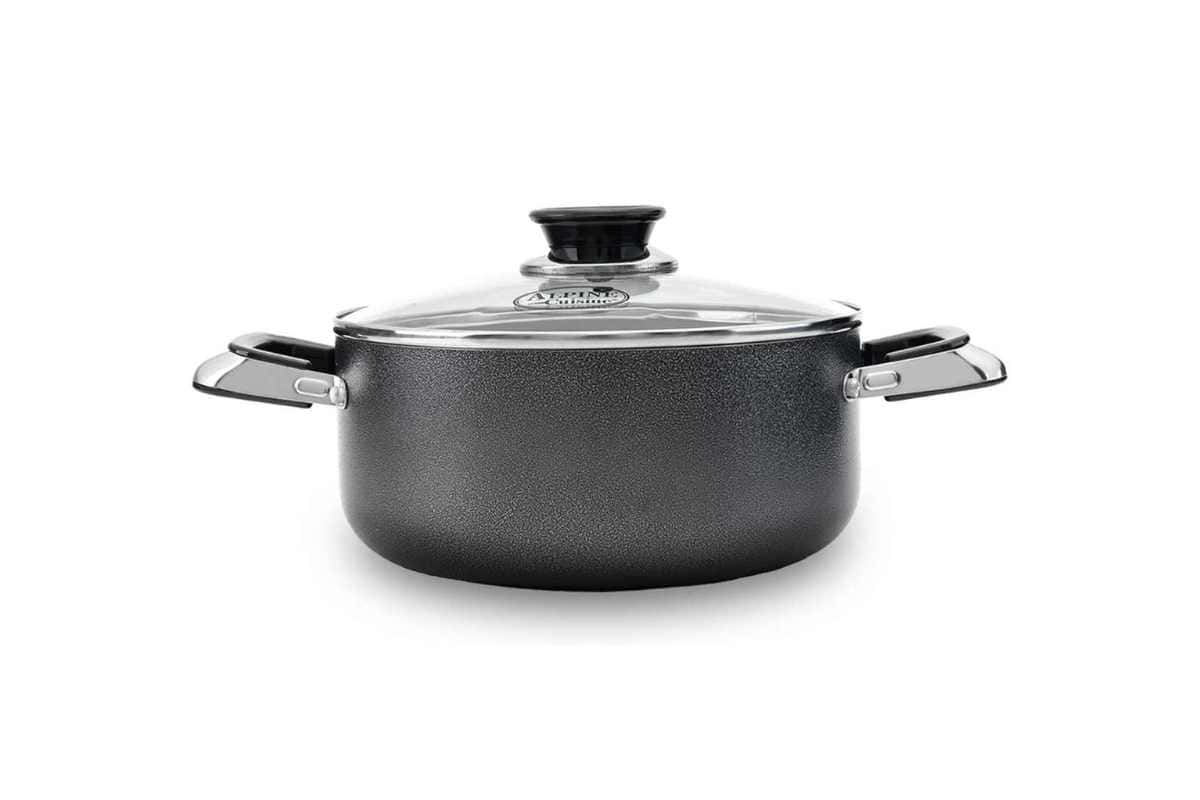
| Capacity | Volume | Diameter | Depth |
|---|---|---|---|
| 1 quart | 0.95 liters | 5-6 in / 12.7-15.2 cm | 4.5-5 in / 11.4-12.7 cm |
| 2 quarts | 1.89 liters | 7-8 in / 17.8-20.3 cm | 5-6 in / 12.7-15.2 cm |
| 3 quarts | 2.84 liters | 8-9 in / 20.3-22.9 cm | 6-7 in / 15.2-17.8 cm |
| 4 quarts | 3.79 liters | 9-10 in / 22.9-25.4 cm | 7-8 in / 17.8-20.3 cm |
These sizes of stock pots take a lot of work to find. If you get one, make gravies, causes, syrups, custards, liquid dishes, or reheat frozen foods. This size is also ideal for boiling eggs.
Small stock pots use very little water that boils fast. Be vigilant because even though a small stock pot is easy to clean, your burner will face the brunt. It’s like boiling milk—look away for a second, and it can quickly boil over.
Medium Size Stock Pots (5–8 Quarts)
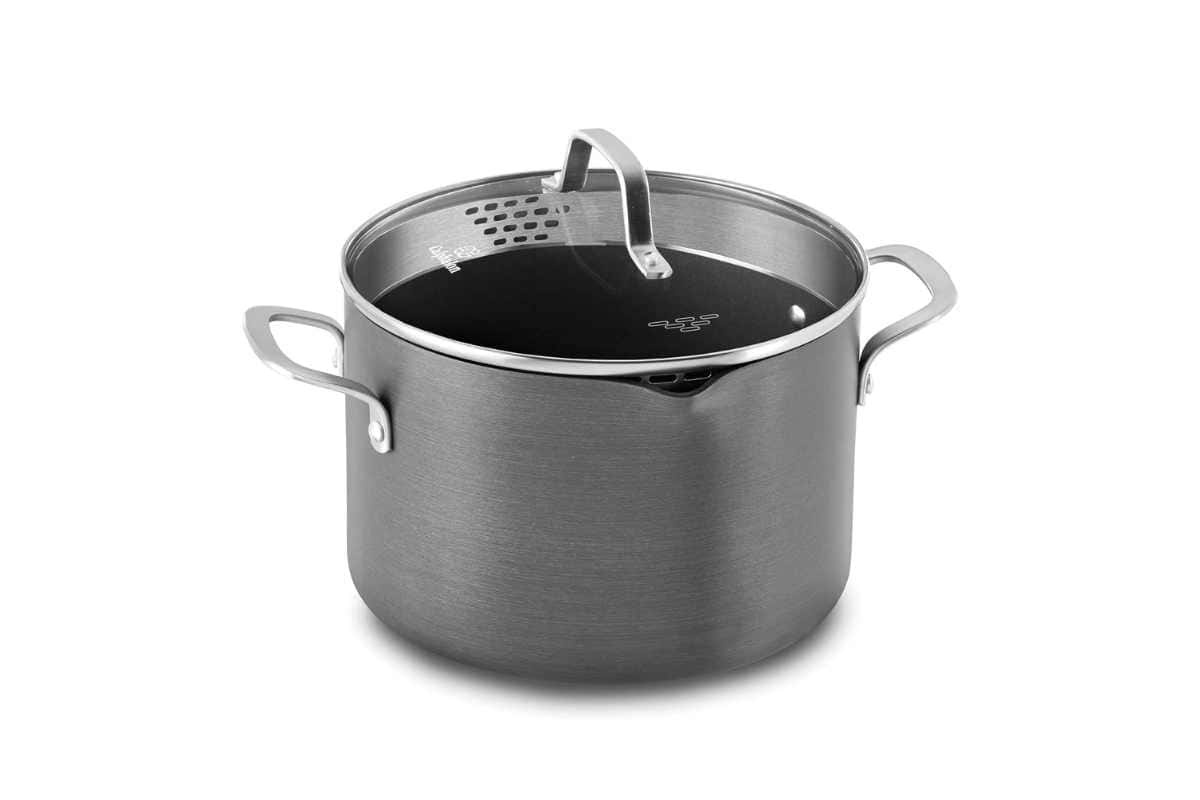
| Capacity | Volume | Diameter | Depth |
|---|---|---|---|
| 5 quarts | 4.73 liters | 9-11 in / 22.9-27.9 cm | 4.5-6 in / 11.4-15.2 cm |
| 6 quarts | 5.68 liters | 10-12 in / 25.4-30.5 cm | 5-6.5 in / 12.7-16.5 cm |
| 7 quarts | 6.62 liters | 11-13 in / 27.9-33 cm | 5.5-7 in / 14-17.8 cm |
| 8 quarts | 7.57 liters | 12-14 in / 30.5-35.6 cm | 6-7.5 in / 15.2-19.1 cm |
It’s a guarantee that you’ll get a stock pot in this category in the market. Why? This size suits a small family, creating tantalizing dinner dishes. Its versatility makes it a must-have for anyone.
This size stock pot is ideal for boiling water, steaming vegetables, deep frying, and baking. It’s also compatible with most burners. However, it may be inadequate if hosting many people, like at a party or family get-together.
Large Size Stock Pots (9–12 Quarts)
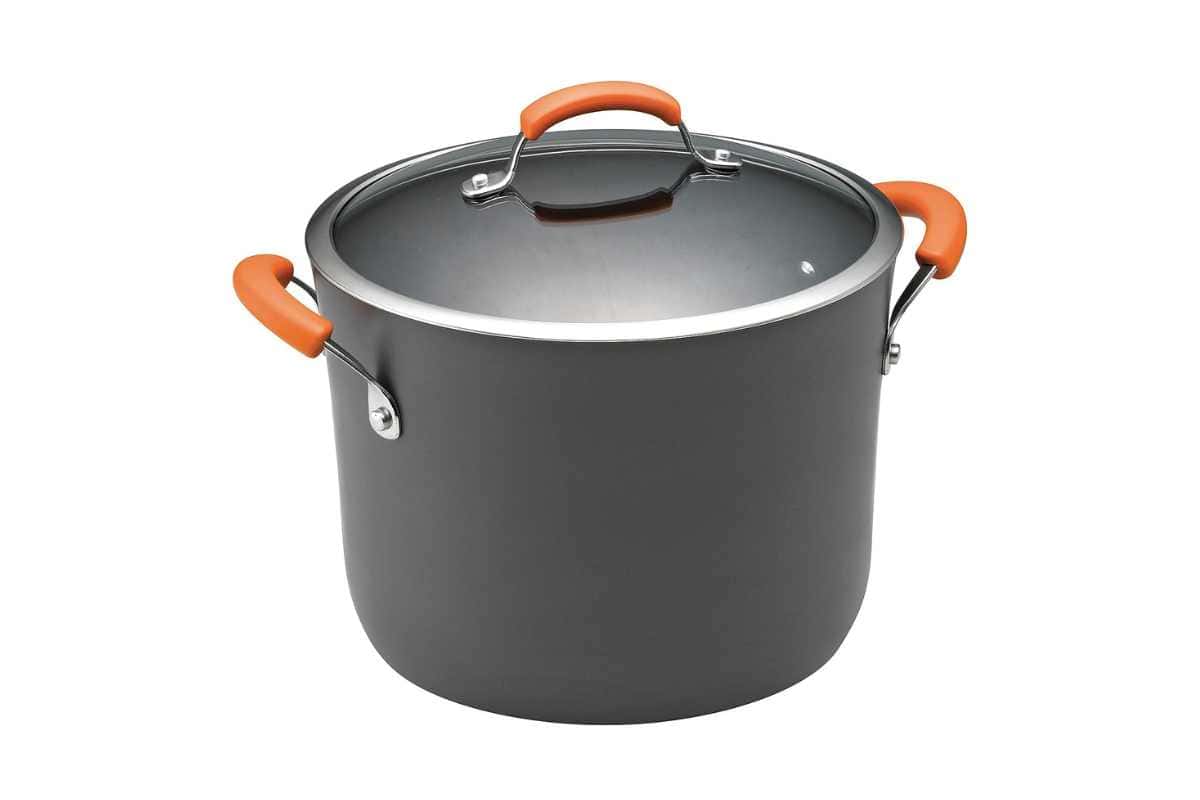
| Capacity | Volume | Diameter | Depth |
|---|---|---|---|
| 9 quarts | 8.52 liters | 10-12 / 25.4-30.48 | 6-8 / 15.24-20.32 |
| 10 quarts | 9.46 liters | 10-13 / 25.4-33.02 | 6-9 / 15.24-22.86 |
| 11 quarts | 10.4 liters | 11-14 / 27.94-35.56 | 6-9 / 15.24-22.86 |
| 12 quarts | 11.35 liters | 11-15 / 27.94-38.1 | 7-10 / 17.78-25.4 |
Get this size for a small family and make many cuisines in bulk. The stock pot size is ideal for corn, chicken, and small seafood like crabs.
Make soups, stews, sauces, and pasta regularly. However, this size is pricier and noticeably hefty when filled with ingredients. Manufacturers also like to integrate more aluminum material for heat conduction into larger stock pots, making them heavier.
Extra Large Stock Pots (12+ Quarts)
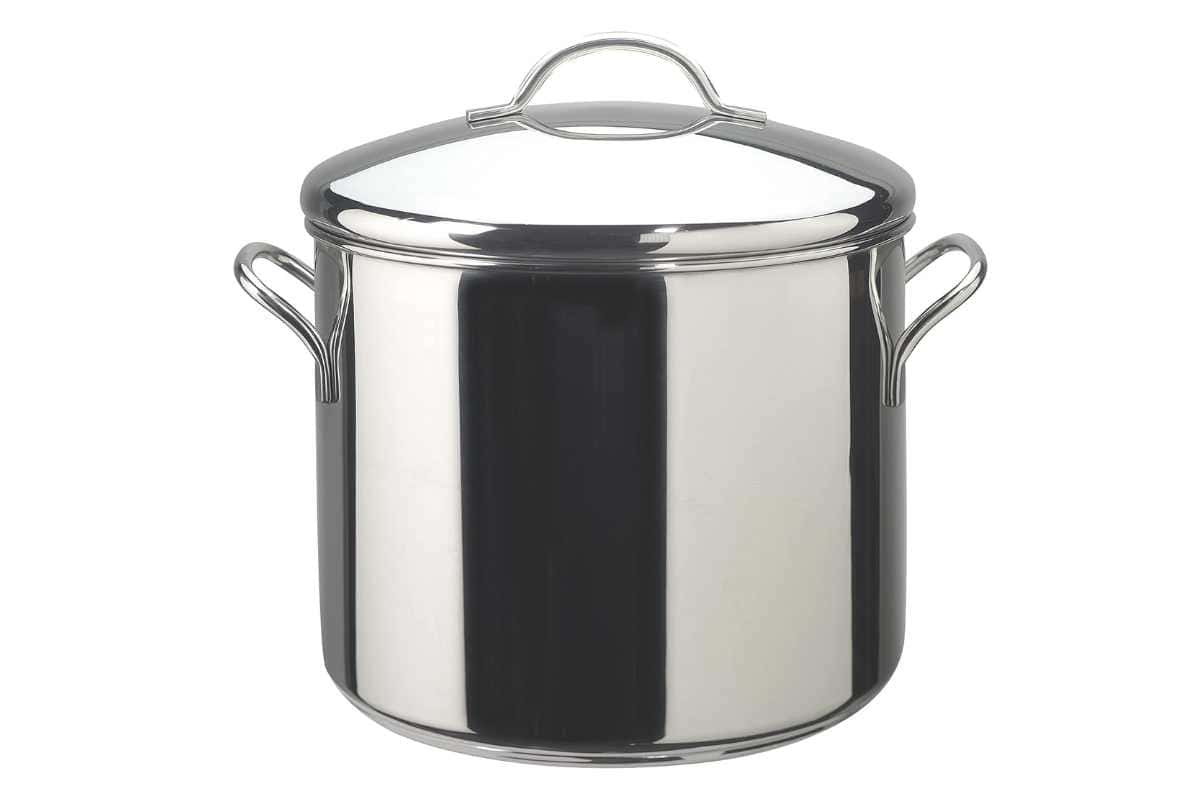
| Capacity | Volume | Diameter | Depth |
|---|---|---|---|
| 14 quarts | 13.25 liters | 12-14 / 30.5-35.5 | 9-11 / 22.9-27.9 |
| 16 quarts | 15.14 liters | 13-15 / 33-38 | 10-12 / 25.4-30.5 |
| 18 quarts | 17.03 liters | 14-16 / 35.5-40.6 | 11-13 / 27.9-33 |
| 20 quarts | 18.93 liters | 15-17 / 38-43.2 | 12-14 / 30.5-35.6 |
This stock pot is ideal for cooking for guests. It’s also great for canning or making beer/ wine.
The best bit about this large stock pot is that it can carry sizable ingredients like lobster. You can get it to create interesting festive dishes for special occasions.
Unfortunately, large stock pots can be challenging to handle, store, and clean. They can be heavy, expensive, and less commonly used in home kitchens. Stock pots that are above 20 quarts are often reserved for commercial purposes.
Choosing the Right-Sized Pots for Different Types of Foods
In this section, we’ll look at varying dishes and the stock pot sizes ideal for cooking them. However, still consider the golden formula to get the desired results.
Soups and Stews
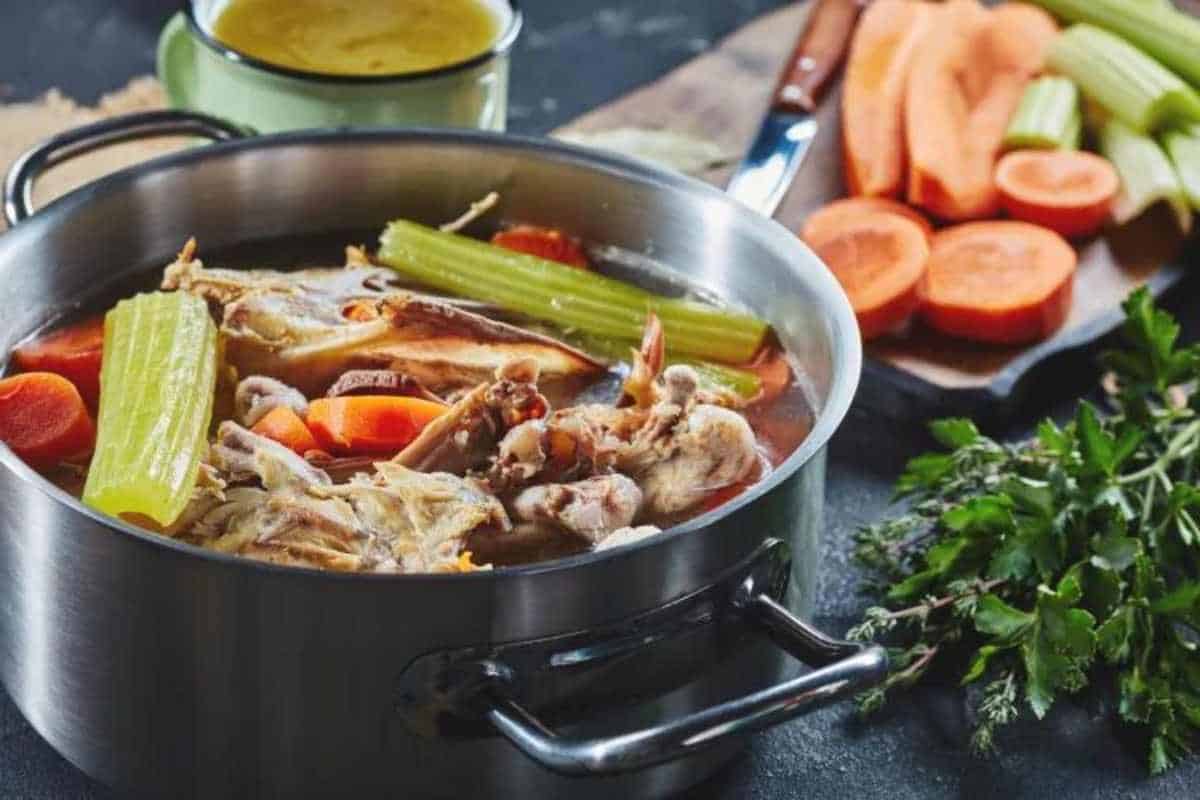
Make soups and stews using meat, bones, vegetables, beans, grains, herbs, and spices. These ingredients are boiled for a long time to get their flavor and nutrients into a thick, rich broth. These can be the cornerstone for some of the delicacies you make.
To brew soups and stews, you’ll need a stock pot that’s large enough to hold all the ingredients. The liquid should not boil over or spill. A thick pot is ideal because it conserves more heat and reduces scorching.
A 4-quart stock pot can serve up to 4 people with soup, stews, and curry, while an 8-quart can do the same for 6 to 8 people.
Pasta and Noodles
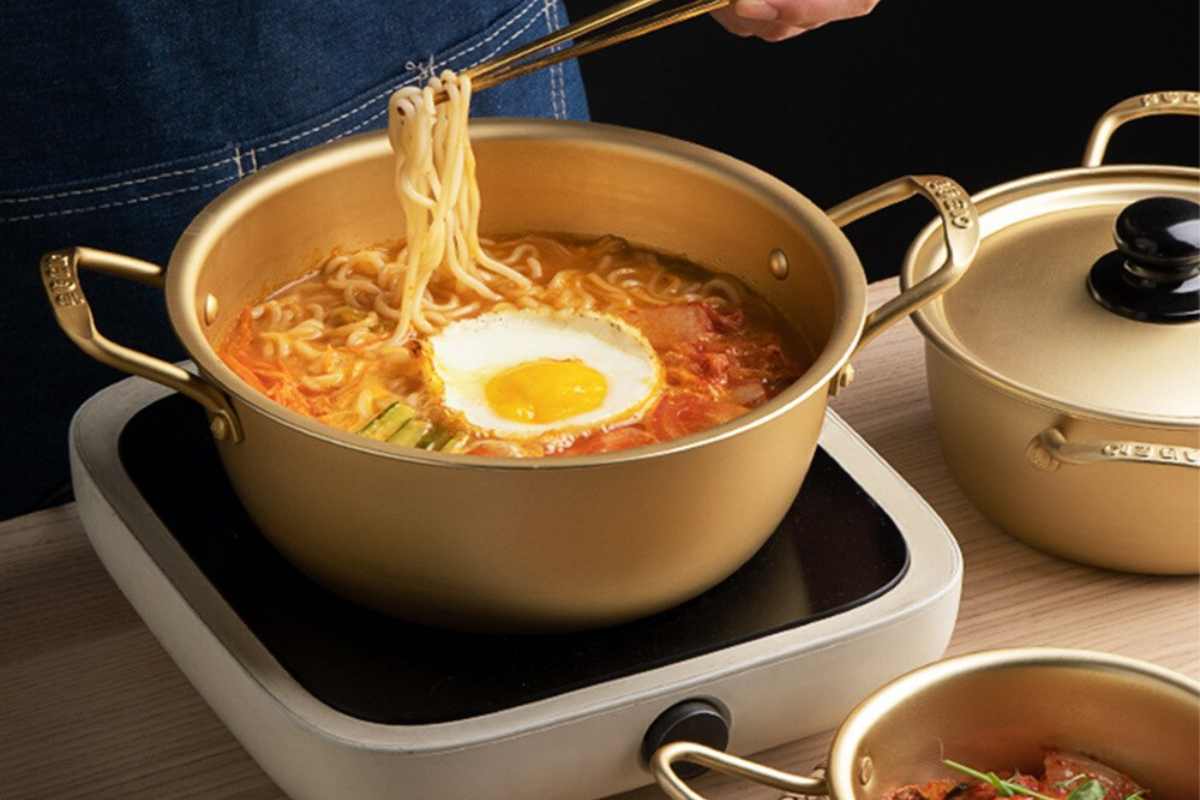
This dish must be cooked until it’s soft and tender for up to 8 minutes most of the time. It would thus be impractical to boil too much water to achieve the desired results.
Water or sauce must completely cover pasta and noodles when cooking them. Also, the liquid shouldn’t spill out of the pot as the ingredients expand.
A 6-quart stock pot should be enough to cook a pound of dry pasta or noodles, which serves 4–6 people.
Preserving/ Canning
Boiling to kill bacteria is a great way to preserve food; a stock pot is what you need. Use this technique to conserve vegetables, jams, pickles, sauces, etc.
You can usually fit 3 to 4 small jars into an 8-quart stock pot. A 12-quart stock pot can fit up to 6 jars. If preserving for commercial purposes, get a 16-quart stock pot to process more jars.
A stock pot with a wider diameter wins when it comes to preservation because it can fit more jars on a single level. Eyeball whether your jars fit into the stock pot in the final boiling process. If not, you’ll have to repeat for more batches.
Remember to choose a non-reactive stockpot when boiling ingredients to preserve. A stainless steel stock pot is great because it’s non-reactive and doesn’t change the taste or color of food.
Frequently Asked Questions
How Can I Tell the Size of My Stock Pot?
TTo find out the capacity of your stock pot, fill it with water using a measuring cup, keeping track of how many cups it takes to fill the pot to its capacity. Alternatively, transfer the liquid into a measuring jar or graduated container. Or determine the height and diameter of your stock pot to calculate its volume.
Some stock pot manufacturers also indicate the vessel’s size on it or on the box it came with.
What’s the Difference Between a Stock Pot, Soup Pot, and Dutch Oven?
Stock pots are large pots with a flat bottom and straight sides. They are designed to make broths, soups, and other liquid dishes. They usually also feature two handles near the top edge for easy transfer.
Soup pots are essentially the same, but some describe them as having a thicker base and taller sides. This difference ensures foods don’t stick to the bottom as much while simmering lasts longer.
Dutch ovens are often made of cast iron, which may be coated with ceramic or enamel. They feature a tight-fitting lid and can be used on stoves or ovens. Their prices can take you aback, though.
Can I Use a Large Stock Pot for Small Food Quantities?
It is possible, but it’s not very wise.
A large stock pot takes what seems like eons to heat up. And, if you don’t fill it up with enough water, the liquid will evaporate too fast. Worse still, your food might not cook properly due to uneven heating, where some sections get burnt.
So, pick a small stock pot unless you’re brewing soup for the whole village. It will save you time, money, and trouble.
Are Bigger Pots Better?
At least you can still use the big pot. However, we’d advise that you get the stock pot of the right size. It becomes a financial loss if it’s comically large and you cook regularly, it becomes a financial loss. Consider the wasted energy after repeated use.
Conclusion
Nobody wants a hot mess or a blood bath while making sauces. Now you know what to look for when choosing the perfect stock pot size to avoid such issues.
To recap, pick a stock pot that’s large enough to serve the number of people you want to. How? Use the formula 2.5/3 quarts per person and a stock pot filled to the ⅔ mark for a general overview.


Michael Johnson is the founder of Pan Mastery, Inspired by his blacksmith grandfather’s legacy has a deep appreciation for hand-crafted pots and pans, he provides invaluable guides, reviews, and recipes to enhance your culinary journey.
